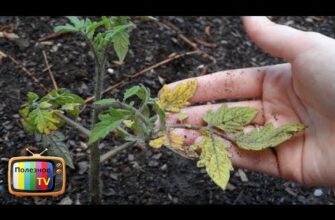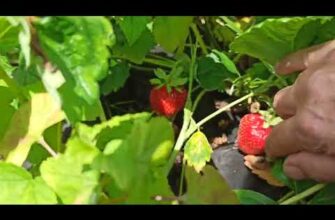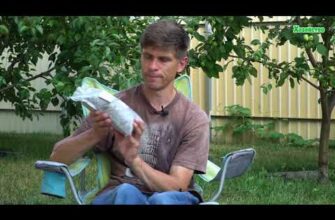- Почему важно определить оптимальные сроки посева?
- Лучшая рассада для успешного роста
- Больше шансов на урожай
- Как определить оптимальные сроки посева?
- Определение сроков посева
- Анализ требований к культуре
- Учитывайте климатические условия
- Проверьте календарь последнего заморозка
- Определите минимальную температуру почвы
- Учтите продолжительность вегетационного периода
- Какой вид семян выбрать?
- Выбирайте семена, подходящие к местности
- Проверьте сроки годности семян
- Какие факторы могут влиять на оптимальные сроки посева?
- Учитывайте сорт растения
- Вопрос-ответ:
- Какие факторы нужно учитывать при определении оптимальных сроков посева семян?
- Какой сорт растения лучше всего подходит для раннего посева?
- Как определить время последнего заморозка?
- Какова оптимальная температура для прорастания семян?
- Что делать, если рассада вытягивается?
- Видео:
- Три золотых правила выращивания баклажанов

Рассада — это первый и важнейший этап приращения растений. От правильно выбранных сроков посева зависит дальнейший рост и развитие рассады. Недостаточно рассчитать только дату посева, необходимо учитывать множество факторов, чтобы получить здоровую и крепкую рассаду, которая не будет переростать или отставать в своем развитии.
Оптимальные сроки посева зависят от многих факторов, включая климатические условия, тип растения, его особенности и требования к условиям выращивания. Некоторые семена требуют длительного периода прорастания, а другие могут быть посеяны непосредственно перед высадкой на грядку. Поэтому очень важно заранее изучить информацию о посеве каждого конкретного вида растения.
Для определения оптимальных сроков посева можно обратиться к справочным материалам или консультантам, занимающимся выращиванием растений. Также можно использовать опыт опытных садоводов и огородников, которые могут поделиться своими знаниями и рекомендациями. Важно помнить, что правильно подобранные сроки посева помогут избежать проблем с ростом и развитием рассады и обеспечат ее здоровое состояние.
Итак, чтобы получить здоровую и крепкую рассаду, необходимо правильно рассчитать оптимальные сроки посева. Для этого стоит учесть климатические условия, требования конкретного вида растения и обратиться к справочным материалам и опыту опытных садоводов. Только таким образом можно получить рассаду, которая будет расти и развиваться без переростов и отставаний.
Почему важно определить оптимальные сроки посева?

Семена — основа успешного посева и получения здоровой рассады. Правильно определенные сроки посева являются важным фактором для достижения оптимальных результатов.
Сроки посева непосредственно влияют на рост и развитие рассады. Если посев выполнен слишком рано, семена могут перерасти и получиться слабая и нездоровая рассада. В то же время, если посев выполнен слишком поздно, рассада может не успеть достичь нужной фазы развития к моменту высадки в открытый грунт.
Чтобы рассчитать оптимальные сроки посева, необходимо учитывать особенности каждого вида семян. Ориентироваться можно на информацию, предоставленную производителем на упаковке семян, а также на специализированные справочники и таблицы посевных сроков для различных культурных растений.
Определение оптимальных сроков посева поможет получить качественную рассаду, которая будет хорошо приживаться в открытом грунте и обеспечит более высокий урожай. Кроме того, правильные сроки посева позволят сэкономить время и усилия на уходе за рассадой, так как она будет расти и развиваться в оптимальных условиях.
Лучшая рассада для успешного роста
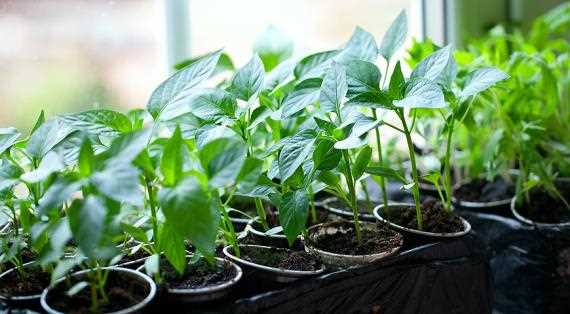
Чтобы получить здоровую и крепкую рассаду, важно правильно рассчитать оптимальные сроки посева семян. Если посев провести слишком рано, рассада может перерасти и стать слабой. В таком случае она будет отставать в росте и иметь большие проблемы при пересадке в грунт.
С другой стороны, если посев семян проводить слишком поздно, рассада может не успеть достаточно вырасти к началу сезона. Это может значительно замедлить ее развитие и повлиять на будущий урожай.
Для определения оптимальных сроков посева следует учитывать разные факторы, такие как климатические условия в регионе, сорт семян и рекомендации производителя. Некоторые растения лучше всего сеять на рассаду заранее, чтобы они имели достаточно времени для развития корневой системы и укрепления стебля.
Важно помнить, что посев рассады — это лишь первый шаг к успешному выращиванию растений. После появления первых всходов необходимо обеспечить рассаде оптимальные условия для роста: поддерживать необходимую температуру, освещение, влажность и регулярно поливать. Таким образом, правильная посадка семян и уход за рассадой поможет достичь хороших результатов в дальнейшем.
Больше шансов на урожай

Рассада – важный этап в выращивании растений. Чтобы получить здоровую и сильную рассаду, необходимо рассчитать оптимальные сроки посева семян.
Семена нужно сеять в определенное время, учитывая особенности каждого вида растения. Если посев произойдет слишком рано, рассада может перерасти и плохо приживаться в грунте. Если же семена посеяны поздно, рассада будет отстаеть в росте и не успеет полноценно развиться.
Определение оптимальных сроков посева семян – это задача, требующая учета множества факторов: климатических особенностей региона, сорта растения, условий выращивания и длительности вегетационного периода. Для этого можно использовать различные календари посева, таблицы и рекомендации опытных садоводов.
Правильно выбранные сроки посева семян позволят получить здоровую и сильную рассаду, что увеличит шансы на урожай. Помните, что рассада – это основа для успешного выращивания растений, поэтому стоит уделить этому этапу особое внимание и тщательно планировать посев.
Как определить оптимальные сроки посева?

Правильный выбор сроков посева имеет огромное значение для успешного роста рассады. Если посев семян проводится слишком рано или поздно, это может привести к отставанию в росте и неполноценной рассаде. Чтобы рассчитать оптимальные сроки посева, необходимо учитывать несколько факторов.
Определение сроков посева
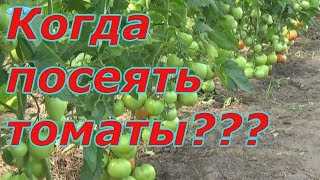
Для определения оптимальных сроков посева необходимо учитывать климатические условия и особенности региона. Рекомендуется обратиться к сельскохозяйственным календарям, которые содержат данные о средней температуре воздуха и почвы, а также дни последнего заморозка. Эти данные помогут определить, когда земля прогреется до оптимальной температуры для прорастания семян и роста рассады.
Анализ требований к культуре

Каждая культура имеет свои особенности и требования к условиям выращивания. Некоторые семена нуждаются в длительном периоде роста на рассаде, чтобы добиться хорошего урожая. Другие же культуры могут быть посеяны напрямую в грунт. Правильное определение сроков посева позволит обеспечить нормальный рост и развитие рассады.
Итак, для определения оптимальных сроков посева необходимо учитывать климатические условия региона и требования культуры. При наличии этих данных можно рассчитать оптимальные сроки посева и обеспечить здоровую и крепкую рассаду.
Учитывайте климатические условия

Правильно подобранные сроки посева семян – один из ключевых факторов успешного роста здоровой рассады. При выборе оптимального времени для посева необходимо учитывать климатические условия региона, где будет происходить выращивание рассады.
Для рассчета сроков посева семян следует ориентироваться на среднюю продолжительность вегетационного периода определенной культуры. Важно учесть, что продолжительность этого периода может варьироваться в зависимости от температурных условий, доступности света и влаги.
В случае холодного климата, рекомендуется задержать посев семян до тех пор, пока почва не прогреется до оптимальной температуры для прорастания. В теплых регионах, напротив, можно начинать посев раньше, чтобы рассада успела развиться перед наступлением жаркого периода.
Важно также учитывать среднюю длительность периода от посева до высадки рассады на грядку. Исходя из этого, можно рассчитать оптимальное время для посева семян так, чтобы рассада достигла нужного размера перед пересадкой в открытый грунт.
Проверьте календарь последнего заморозка
Определение оптимальных сроков посева семян для здоровой рассады — это важный шаг к успешному росту и развитию растений. Одним из ключевых факторов, влияющих на успех посева, являются погодные условия, включая последний заморозок весны.
Рост и развитие рассады зависят от того, когда семена были посеяны. Если посев произошел слишком рано, рассада может отставать в росте и развитии. Если посев произошел слишком поздно, рассада может перерасти и стать слабой и нездоровой. Поэтому важно рассчитать оптимальные сроки посева, чтобы получить здоровую и крепкую рассаду.
Проверьте календарь последнего заморозка в вашем регионе. Это поможет определить первый допустимый срок посева семян. Учтите, что заморозки могут нанести значительный вред молодой рассаде, поэтому рекомендуется посевать семена после последнего заморозка.
Определите минимальную температуру почвы

Так стоп!!! Вы всё ещё не подписаны на наши каналы в Телеграмм и Дзен? Посмотрите: ТГ - (@historyfantasydetectivechat) и Дзен (https://dzen.ru/myshortsstorys)
Для роста здоровой рассады необходимо знать оптимальные условия, в которых семена будут прорастать. Одним из ключевых факторов является минимальная температура почвы, при которой начинается прорастание семян.
Чтобы рассчитать этот показатель, необходимо применить специальные методы и инструменты. Например, можно использовать термометр, который помещается в почву на определенную глубину. Важно помнить, что для разных культур и сортов минимальная температура может отличаться.
Если почва слишком холодная, семена могут перерастать или отставать в развитии. В таком случае рассаду будет сложно вырастить правильно и здорово. Поэтому важно подобрать оптимальное время для посева, учитывая минимальную температуру почвы.
Учтите продолжительность вегетационного периода

Определение оптимальных сроков посева семян для здоровой рассады требует учета продолжительности вегетационного периода. Вегетационный период — это время, необходимое для полного роста и развития растения, начиная с появления первых побегов и заканчивая формированием плодов или семян.
Рассада — это один из этапов развития растений, предшествующий пересадке на постоянное место роста. Чтобы рассада была здоровой и сильной, необходимо правильно рассчитать сроки посева семян. Если посев произведен слишком рано, рассада может перерасти или плохо развиться. Если посев произведен поздно, рассада может иметь отставание в росте и развитии.
Для определения оптимальных сроков посева семян, необходимо учитывать продолжительность вегетационного периода различных культурных растений. Каждый вид растения имеет свою уникальную продолжительность вегетационного периода, которая зависит от его биологических особенностей и условий выращивания.
Для более точного определения оптимальных сроков посева семян можно использовать информацию из специальных справочников или консультироваться с опытными садоводами. Также полезно учитывать климатические особенности региона и прогноз погоды, чтобы избежать неблагоприятных условий для роста рассады.
Какой вид семян выбрать?

Выбор правильного вида семян является одним из ключевых моментов при посеве рассады. Чтобы рассчитать оптимальные сроки посева, необходимо учитывать ростовые характеристики разных видов семян. Они могут отличаться по скорости прорастания и роста.
Семена, которые имеют быстрое прорастание и рост, могут быть посеяны раньше срока, чтобы дать рассаде дополнительное время для развития. Семена с отставанием в росте рекомендуется посевать позже, чтобы исключить возможные проблемы с развитием рассады.
Для определения оптимального вида семян можно использовать рекомендации посева от производителей или обратиться к опытным садоводам. Они смогут подсказать, какие семена лучше выбрать в зависимости от целей выращивания рассады и условий окружающей среды.
Также, при выборе семян рекомендуется обратить внимание на их качество. Предпочтение лучше отдать проверенным производителям с хорошей репутацией. Качественные семена обеспечат здоровую и сильную рассаду, которая будет успешно развиваться в дальнейшем.
Выбирайте семена, подходящие к местности

Оптимальные сроки посева семян для получения здоровой рассады зависят от многих факторов. Один из них — соответствие семян конкретной местности. Важно выбирать семена, которые подходят к климатическим условиям и почвенному составу вашего региона.
Если выбрать неподходящие семена, это может привести к переросту рассады или ее замедленному росту. Важно учитывать особенности климата и почвы вашего региона при выборе семян.
Чтобы правильно рассчитать сроки посева, можно обратиться к агрономам или специалистам по сельскому хозяйству в вашем регионе. Они смогут подсказать оптимальные сроки посева семян для вашего региона и дать рекомендации по выбору подходящих семян.
Также полезно обратиться к опыту других садоводов или фермеров, которые уже занимаются выращиванием растений в вашем регионе. Они могут поделиться своими знаниями и опытом, что поможет вам выбрать правильные семена и определить оптимальные сроки посева.
Проверьте сроки годности семян

Прежде чем приступить к посеву семян для рассады, необходимо проверить их сроки годности. Использование устаревших семян может привести к отставанию в росте и развитии рассады.
Семена с ограниченным сроком годности, которые уже переросли, не смогут правильно прорасти и дать здоровую рассаду. Поэтому перед посевом необходимо рассчитать сроки, чтобы выбрать только свежие семена.
Ознакомьтесь с информацией на упаковке семян или обратитесь к производителю, чтобы узнать срок годности. Если вы уже давно храните семена и не уверены в их качестве, рекомендуется провести пробную посадку на небольшой участок, чтобы убедиться, что они всё еще способны дать хорошую рассаду.
Проверка сроков годности семян — важный этап подготовки к посеву рассады. Не забывайте о нем, чтобы обеспечить здоровый и устойчивый рост рассады.
Какие факторы могут влиять на оптимальные сроки посева?
1. Качество семян. От качества семян зависит их способность прорастать и развиваться. Семена низкого качества могут перерастать или вовсе не прорастать, что отрицательно скажется на росте рассады. Поэтому важно приобретать только качественные и сертифицированные семена, чтобы правильно определить оптимальные сроки посева.
2. Климатические условия. Разные культуры имеют свои особенности и требуют определенных климатических условий для нормального роста и развития. Температура, влажность и освещение являются ключевыми факторами, которые могут влиять на оптимальные сроки посева. Например, некоторым растениям необходимо семена посевать в теплице или начинать рассаду задолго до ожидаемой даты последнего заморозка.
3. Вид культуры. Разные культуры имеют разные требования к срокам посева. Некоторые семена требуют длительного проращивания перед посевом, чтобы достичь оптимального состояния для роста рассады. Другие культуры могут отставать в росте, если посев осуществляется слишком поздно.
4. Тип почвы. Качество почвы также может влиять на оптимальные сроки посева. Некоторые виды почвы могут быть слишком холодными или слишком влажными для прорастания семян. Поэтому необходимо учитывать тип почвы и ее состояние при определении оптимальных сроков посева.
Учитывайте сорт растения
Для рассчета оптимальных сроков посева семян и получения здоровой рассады необходимо учитывать сорт растения. Каждый сорт имеет свои особенности и требования к условиям выращивания, включая правильные сроки посева.
Правильно выбранные сроки посева позволяют избежать отставания в росте рассады. Если посев семян произведен слишком рано, то растения могут столкнуться с неблагоприятными условиями, такими как низкие температуры и недостаток света. Это может привести к замедлению роста и развития рассады.
С другой стороны, посев семян слишком поздно может привести к недостаточному времени для полноценного роста и развития рассады перед высадкой на грядку. Растения могут быть слабыми, неустойчивыми к болезням и вредителям.
Поэтому, перед посевом семян необходимо изучить рекомендации производителей по сорту растения. Они содержат информацию о оптимальных сроках посева и помогут рассчитать правильные сроки для получения здоровой и крепкой рассады.
Вопрос-ответ:
Какие факторы нужно учитывать при определении оптимальных сроков посева семян?
При определении оптимальных сроков посева семян необходимо учитывать такие факторы, как сорт растения, климатические условия, длительность вегетационного периода, время последнего заморозка и дату высадки рассады на открытый грунт.
Какой сорт растения лучше всего подходит для раннего посева?
Для раннего посева лучше всего подходят сорта растений, которые имеют короткий вегетационный период и хорошо переносят низкие температуры, например, ранние сорта овощей, зелени и цветов.
Как определить время последнего заморозка?
Время последнего заморозка можно определить по климатическим данным, историческим наблюдениям или с помощью специальных метеорологических сервисов, которые предоставляют информацию о средней дате последнего заморозка в данном регионе.
Какова оптимальная температура для прорастания семян?
Оптимальная температура для прорастания семян зависит от вида растения. В среднем, большинство овощных и цветочных культур прорастает при температуре около 20-25 градусов по Цельсию.
Что делать, если рассада вытягивается?
Если рассада вытягивается, необходимо обеспечить ей дополнительное освещение, чтобы компенсировать недостаток света. Также можно замульчировать грунт вокруг рассады, чтобы укрепить ее стебель.


